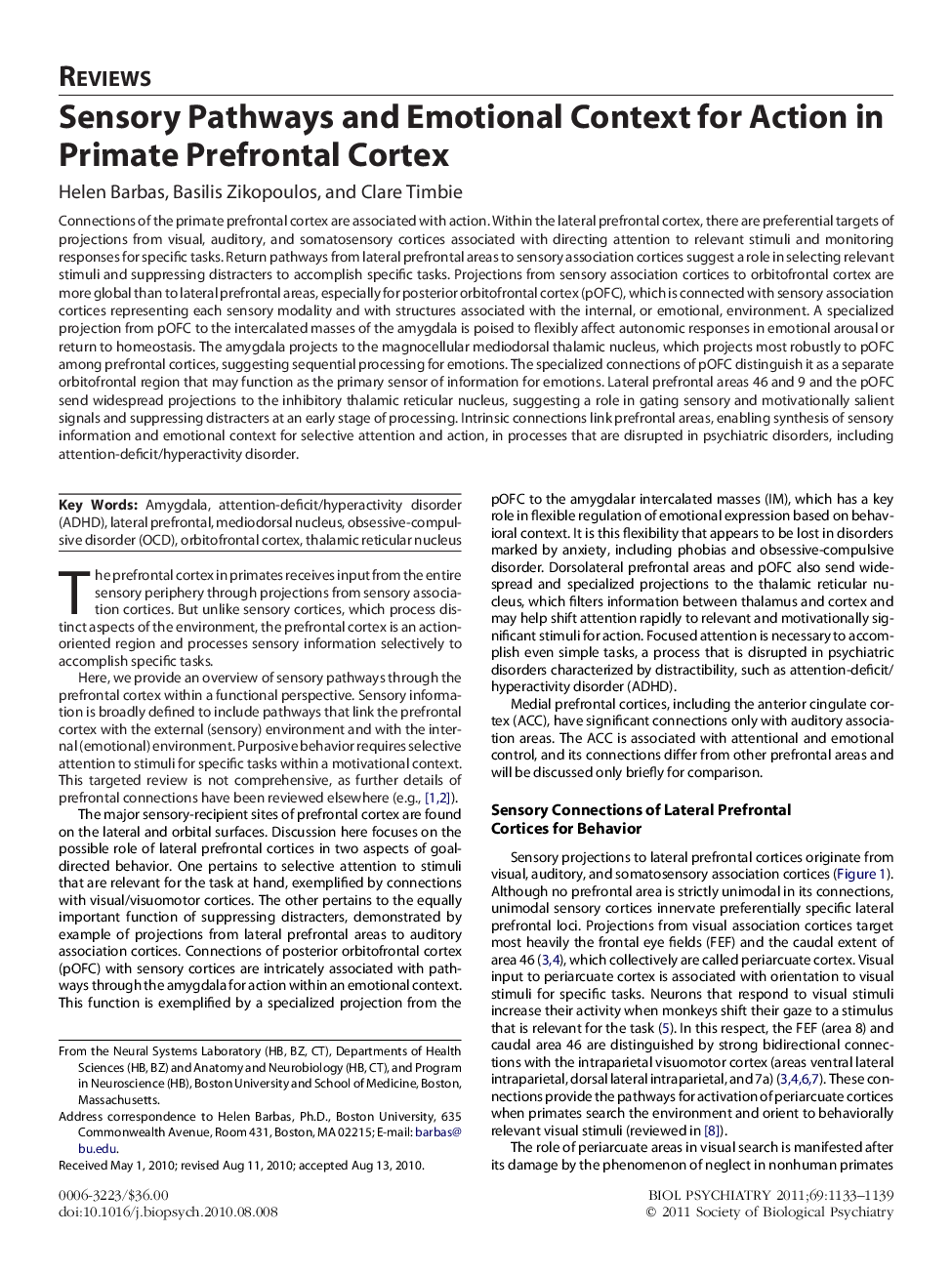| Article ID | Journal | Published Year | Pages | File Type |
|---|---|---|---|---|
| 4178599 | Biological Psychiatry | 2011 | 7 Pages |
Connections of the primate prefrontal cortex are associated with action. Within the lateral prefrontal cortex, there are preferential targets of projections from visual, auditory, and somatosensory cortices associated with directing attention to relevant stimuli and monitoring responses for specific tasks. Return pathways from lateral prefrontal areas to sensory association cortices suggest a role in selecting relevant stimuli and suppressing distracters to accomplish specific tasks. Projections from sensory association cortices to orbitofrontal cortex are more global than to lateral prefrontal areas, especially for posterior orbitofrontal cortex (pOFC), which is connected with sensory association cortices representing each sensory modality and with structures associated with the internal, or emotional, environment. A specialized projection from pOFC to the intercalated masses of the amygdala is poised to flexibly affect autonomic responses in emotional arousal or return to homeostasis. The amygdala projects to the magnocellular mediodorsal thalamic nucleus, which projects most robustly to pOFC among prefrontal cortices, suggesting sequential processing for emotions. The specialized connections of pOFC distinguish it as a separate orbitofrontal region that may function as the primary sensor of information for emotions. Lateral prefrontal areas 46 and 9 and the pOFC send widespread projections to the inhibitory thalamic reticular nucleus, suggesting a role in gating sensory and motivationally salient signals and suppressing distracters at an early stage of processing. Intrinsic connections link prefrontal areas, enabling synthesis of sensory information and emotional context for selective attention and action, in processes that are disrupted in psychiatric disorders, including attention-deficit/hyperactivity disorder.
